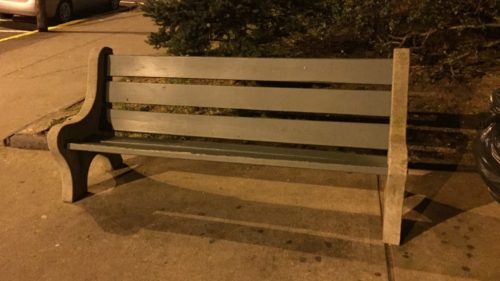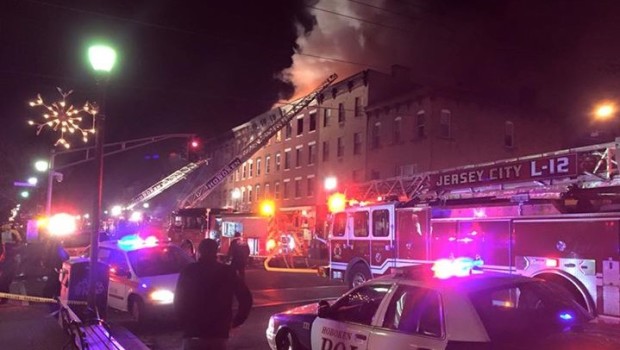
Last Call for Comments on Hoboken’s New Jersey Transit Records Building
(ABOVE: image via City of Hoboken)
March 31st marks he deadline for public comment on the future of the New Jersey Transit Records Building.
The New Jersey Transit Records Building was constructed in 1904 and has thus been deemed a historic property. However, it has fallen into a state of disrepair and has been recently deemed an unsafe structure by the NJ Department of Community Affairs. Although the property sits smack-dab within the Hoboken Rail Yard Redevelopment Zone, as required by State Historic Preservation Office (“SHPO”), New Jersey Transit is conducting an analysis of alternatives to demolition of the building.
New Jersey Transit was set to host a public meeting on March 17, which was canceled due to safety concerns regarding COVID-19. The City of Hoboken maintains that it has have repeatedly requested that New Jersey Transit delay the March 31 deadline due to the national crisis caused by COVID-19 in order to hold a public meeting at a later date, but were denied this request. The City also requested to hold an online meeting to provide an opportunity for a presentation and interactive engagement but were denied by NJ Transit.
“Unfortunately the public inputs on the Records Building are not being extended for comment beyond 3/31,” said Terry Pranses, of the Responsible Development Task Force. “One of many issues surfaced during the recent Hoboken Yards Redevelopment discussion is the fate of the historic Records Building. Due to concerns about the Record Building’s proximity to pedestrians and various workers, NJ Transit has prevented access to that immediate area within the Rail Yards.”
The City also provides a public survey for inputs on those alternatives, which range from stabilizing and rehabilitating the building to completely demolishing it. According to the Responsible Development Task Force, demolition would cost an estimated $1.2 million.
CLICK HERE for the survey.
“The RD-Task Force, reviewing the alternatives, favors #4 – “Adaptive Reuse,” says Pranses. “This approach is actually a two-step one: The building would first be stabilized in place, then with public inputs, it would be adapted for a new use.”
Any comments or questions be submitted to NJ TRANSIT here: https://njtransitresilienceprogram.com/contact-us/ (Click on: “Project Feedback Related to:” and select “Hoboken Terminal”).
***

 Previous Article
Previous Article Next Article
Next Article POLICE: Homeless Burglar “Looking for Somewhere to Sleep” on Christmas Eve
POLICE: Homeless Burglar “Looking for Somewhere to Sleep” on Christmas Eve  WE’RE HIRING — Part-Time Ad Sales
WE’RE HIRING — Part-Time Ad Sales  Officials Estimate Budget Impact of Coronavirus Outbreak to Approach $70 Million for Jersey City
Officials Estimate Budget Impact of Coronavirus Outbreak to Approach $70 Million for Jersey City  “Green Eggs and Ham” with Mayor Zimmer — Friday at Little City Books
“Green Eggs and Ham” with Mayor Zimmer — Friday at Little City Books  HOBOKEN FIRE: Blaze on Washington Street in Freezing Conditions Injures First Responders
HOBOKEN FIRE: Blaze on Washington Street in Freezing Conditions Injures First Responders  HE SAID, SHE SAID: Mile Square Theatre to Host “The Great Love Debate”
HE SAID, SHE SAID: Mile Square Theatre to Host “The Great Love Debate”  Hoboken City Council: Flooding is Bad, But We’re Not Going to Fix It
Hoboken City Council: Flooding is Bad, But We’re Not Going to Fix It  Hoboken Student Answers the Question: ‘What Does Veterans Day Mean to Me?’
Hoboken Student Answers the Question: ‘What Does Veterans Day Mean to Me?’